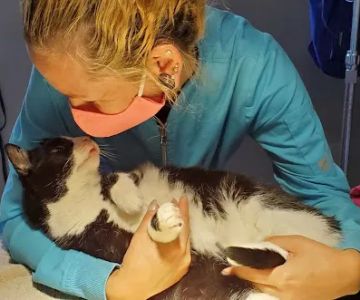What is a Veterinarian Radiologist? Understanding Their Role in Veterinary Care
- 1. What is a Veterinarian Radiologist?
- 2. The Role of a Veterinarian Radiologist
- 3. The Importance of Radiology in Veterinary Care
- 4. Training and Qualifications of a Veterinary Radiologist
- 5. Real-Life Case Studies: How a Veterinarian Radiologist Helps
1. What is a Veterinarian Radiologist?
A veterinarian radiologist is a specialized veterinary professional who uses diagnostic imaging techniques to identify and diagnose health conditions in animals. This includes procedures like X-rays, CT scans, MRIs, and ultrasounds to examine the internal structures of animals. Much like human radiologists who interpret medical imaging for people, veterinary radiologists focus on animals, helping veterinarians understand the root causes of health issues that are not visible externally.
Radiologists are integral to modern veterinary practices, providing critical support for conditions that require advanced diagnostic tools. These professionals typically work in partnership with veterinarians to interpret complex images and provide accurate diagnoses that guide treatment plans for various medical conditions, including bone fractures, tumors, and internal injuries.
2. The Role of a Veterinarian Radiologist
The role of a veterinarian radiologist extends beyond simply taking images; they are responsible for interpreting and analyzing these images to provide insights that aid in accurate diagnoses. This diagnostic support allows the primary veterinarian to decide on the best treatment options for their patients. Here's a closer look at their responsibilities:
- Interpretation of Imaging Results: One of the primary duties of a veterinarian radiologist is interpreting medical images such as X-rays, MRIs, CT scans, and ultrasounds. These images help veterinarians identify hidden conditions that cannot be detected through physical exams.
- Collaborating with Veterinarians: Veterinarian radiologists work closely with the primary veterinarians to ensure that the diagnosis is accurate and that the right treatment options are considered. They offer recommendations on how to proceed based on the images, which helps in creating the most effective treatment plans.
- Consultation for Complex Cases: Often, veterinarian radiologists are called in to consult on difficult or unusual cases. Their expertise in diagnostic imaging can be the key to unlocking a diagnosis in cases where traditional examinations or simpler imaging methods have not provided conclusive results.
3. The Importance of Radiology in Veterinary Care
Radiology plays an essential role in the accurate diagnosis and treatment of animals. It allows for non-invasive examination of the body, which can be crucial for identifying conditions such as broken bones, infections, or tumors that would otherwise require invasive surgical procedures to detect.
Without the expertise of a veterinarian radiologist, diagnosing internal injuries or diseases in animals would be far more challenging. Imaging technologies provide a clear view of internal structures, which is vital in guiding treatment decisions, improving outcomes, and even saving lives.
For example, during an emergency where an animal might have been hit by a car, an X-ray can quickly reveal broken bones or internal bleeding, helping the vet to act fast. This immediate access to accurate data allows for quicker, more effective treatment.
4. Training and Qualifications of a Veterinary Radiologist
Becoming a veterinarian radiologist requires years of education and training. Typically, a veterinarian must first complete a veterinary degree (DVM or VMD) and then undergo additional specialized training in veterinary radiology.
The path involves gaining experience in general veterinary practice, followed by pursuing a residency in radiology, which can take several years to complete. Upon finishing their residency, many veterinary radiologists pursue board certification through the American College of Veterinary Radiology (ACVR), which ensures they meet the highest standards in the field.
In addition to their formal education, continuous learning is essential for veterinarian radiologists. With advancements in imaging technology and techniques, these professionals must stay up-to-date with the latest research, equipment, and methodologies to provide the best care for animals.
5. Real-Life Case Studies: How a Veterinarian Radiologist Helps
To better understand the critical role of veterinarian radiologists, let me share a couple of real-life case studies that highlight their importance in veterinary care.
5.1. A Case of a Torn Ligament
My dog, Max, was playing fetch one day when he suddenly limped and refused to move. After a physical examination, the general vet suspected a ligament injury, but they couldn’t be sure without imaging. A veterinarian radiologist was called in to perform an MRI, which revealed a torn ligament in Max’s knee. Thanks to the early detection through radiology, Max was able to get the right surgical treatment and rehabilitation, and he made a full recovery.
5.2. Diagnosing a Tumor in a Cat
Another case involved my neighbor’s cat, Whiskers, who had been losing weight and eating less. After some basic tests, the primary vet wasn’t sure what was causing the symptoms, so a veterinary radiologist performed a full-body scan. The radiologist discovered a tumor in Whiskers’ abdomen, which led to an early diagnosis of cancer. This early detection allowed Whiskers to receive the proper treatment in time, and the cat had a much better chance of recovery due to the accurate diagnosis.











